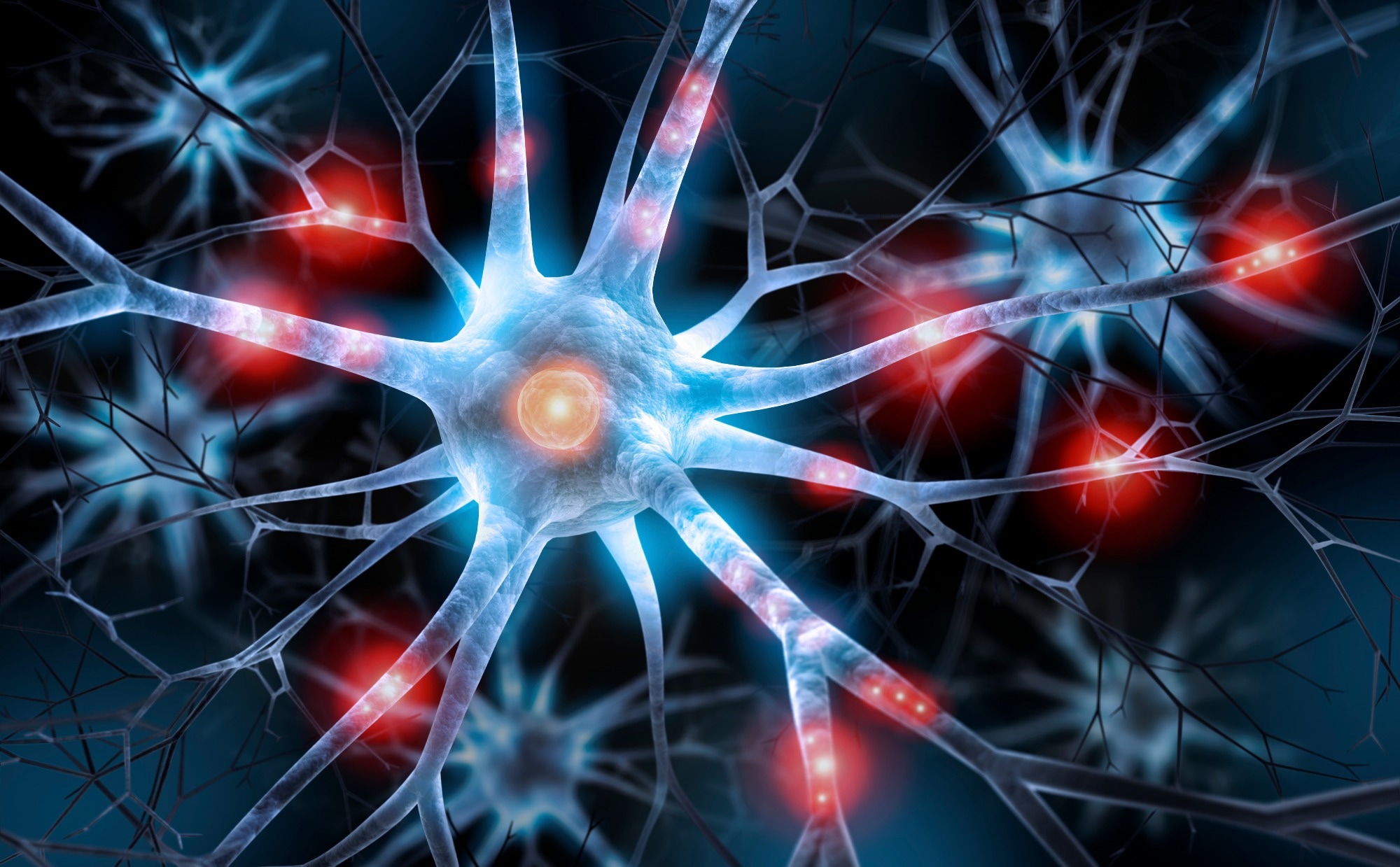
Exploring developmental pathways and disease interactions in nervous and stomatognathic systems
The interplay between the nervous and stomatognathic systems, both anatomically proximate and functionally intertwined, holds profound implications for health. Advances in brain science reveal significant crosstalk between the two systems, thus underpinning emergent concepts like neuromuscular dentistry and stomatopsychology.
From craniomaxillofacial development to nerve-bone regulation, this relationship dictates both systems' health. Understanding their mutual influence can elucidate the neurological effects of oral ailments and vice versa, ultimately offering new approaches for early diagnosis, better prognosis, and targeted therapies.
 Study: The interaction between the nervous system and the stomatognathic system: from development to diseases. Image Credit: peterschreiber.media / Shutterstock.com
Study: The interaction between the nervous system and the stomatognathic system: from development to diseases. Image Credit: peterschreiber.media / Shutterstock.com
In a recent review published in the International Journal of Oral Science, scientists discuss the intricate relationship between the nervous and stomatognathic systems, highlighting their developmental homology, anatomical proximity, and the emerging "brain-oral axis" concept. These observations were also used to explore related diseases and potential strategies for prevention and treatment in neuro-skeletal tissue engineering.
Physiological growth of nervous and craniomaxillofacial systems
Cranial and maxillofacial development in vertebrates is intimately linked with neural growth. Neural crest (NC) cells, which are vital in this process, are multi-functional with migration and differentiation capabilities.
Originating from the neural tube, NC cells express signature genes before undergoing transitions. Of the different NC cell groups, cranial NC (CNC) cells are vital for craniofacial development and bone formation.
CNC cell migration is precise and contributes to structures like cartilage, cranial nerves, and the jawbone. CNC cells also participate in tooth formation, thus demonstrating the significant impact nerves have on cranial and maxillofacial growth.
Developmental anomalies of the nervous and craniomaxillofacial systems
Trisomy 21
Otherwise known as Down’s syndrome, Trisomy 21, which is caused by an extra chromosome 21, leads to cognitive delays, neurodevelopmental disorders, and Alzheimer's disease. Oral symptoms range from periodontitis to bruxism.
The abnormal tooth development in Trisomy 21 can be attributed to peripheral nervous system (PNS) alterations or tooth germ abnormalities. Treatments include surgical procedures and orthodontics.
Neurofibromatosis type 1
A genetic disorder with a frequency of 1 in 1,000, Neurofibromatosis type 1 (NF1) arises due to mutations in the NF1 gene that affect the face's underlying skeleton. Oral manifestations in patients include malocclusions and gingival neurofibroma, with surgical resection a common treatment approach for this condition.
Achondroplasia
A common genetic disorder of dwarfism, achondroplasia is linked to mutations in the fibroblast growth factor receptor 3 (FGFR3) gene. FGFR3 genetic mutations lead to neurological complications due to narrowing spinal canals and abnormalities like midface hypoplasia. Interventions should be administered before synchondrosis closure.
The influence of the nervous system on jawbones
The jawbone's distinctiveness lies in its nerve pathways. Within its bony ducts, nerves extend branches to nearby tissues. The primary nerve involved in this process is the trigeminal nerve, which comprises three significant branches.
The maxillary nerve connects with the maxilla, whereas the inferior alveolar nerve connects to the mandible. In addition to the trigeminal nerve, the autonomic nervous system (ANS) also influences the jawbone's health.
In vivo studies have elucidated a diverse relationship between the sympathetic nervous system (SNS) and bone mass. Increased SNS activity has been linked to bone degradation, as it enhances bone erosion through mechanisms like receptor activator of the nuclear factor kappa B ligand system.
Comparatively, the parasympathetic nervous system (PSNS) has an anti-inflammatory response, which is beneficial for the jawbone. Nevertheless, there remains a lack of comprehensive studies on the impact of the ANS on the jawbone.
Sensory nerves support bone repair through neuropeptides such as calcitonin gene-related peptide (CGRP) and substance P (SP). These peptides communicate with bone cells, thus demonstrating a strong link between the nervous system and bone health.
How does the jawbone impact nerves?
Various conditions within the jawbone can alter nerve distribution. The mandibular canal, for example, which houses the inferior alveolar nerve, is influenced by the number of teeth, thus impacting nerve distribution.
Nerves may also react to mechanical stimuli like jawbone tension or orthodontic forces. These forces, depending on their intensity and duration, can influence nerve distribution in the dental pulp and periodontal ligament (PDL).
Molecules secreted by bone cells can also affect nerve activity. For example, nerve growth factor (NGF) aids in nerve maintenance, whereas semaphorin 3A (sema3a) restricts nerve growth. Changes in these molecules can alter nerve distribution in the jawbone.
Neurological impact on craniofacial diseases
Facial paralysis
Facial paralysis arises due to facial nerve dysfunction, which limits facial muscle activity. Central facial paralysis originates from lesions between the facial nerve nucleus and cerebral cortex.
Central facial paralysis can be caused by cerebrovascular diseases and brain trauma. Some of the symptoms of facial paralysis include facial muscle palsy on the opposite side and food retention in the oral cavity.
Comparatively, peripheral facial paralysis is often due to viral infections or trauma. Bell palsy, a type of peripheral paralysis, leads to paralysis of all facial muscles on one side.
Facial spasm
Facial spasm involves involuntary spasms of facial muscles. Primary facial spasms result from demyelination due to tumors or vascular malformations that compress the facial nerve root. Secondary spasms arise from facial nerve injuries, often starting with the orbicularis oculi muscle.
Salivation
Neurological lesions can lead to abnormal salivary secretion. Issues such as stroke or neuromuscular diseases can cause ineffective saliva control and impaired swallowing. Excessive saliva in the mouth corner can cause oral mucosal diseases.
Frey syndrome
PSNS fibers may control denervated sweat glands in the skin. Consequently, chewing could cause sweating, as well as flushing in the preauricular area, a condition termed Frey syndrome that is associated with symptoms such as face rash, itching, and neuralgia.
The role of the stomatognathic system in neurological diseases
Oral conditions can influence the onset of neurological diseases. For example, oral infections, malocclusion, and Sjogren syndrome can contribute to neurological issues.
The oral cavity's abundant microflora and its proximity to the brain make the CNS vulnerable to infections. Infections, whether from oral-specific conditions or even oral procedures, can invade the CNS, subsequently leading to severe outcomes like chronic inflammation or brain abscesses. Notably, pathogens like Porphyromonas gingivalis can cross the blood-brain barrier, thus increasing the risk of acute ischemic stroke.
- Wu, Y., Lan, Y., Mao, J. et al. (2023). The interaction between the nervous system and the stomatognathic system: from development to diseases. International Journal of Oral Science. doi:10.1038/s41368-023-00241-4 https://www.nature.com/articles/s41368-023-00241-4
Posted in: Molecular & Structural Biology | Medical Science News | Medical Research News | Medical Condition News
Tags: Achondroplasia, AIDS, Alzheimer's Disease, Anti-Inflammatory, Autonomic Nervous System, Blood, Bone, Bone Health, Brain, Bruxism, Calcitonin, Cartilage, Cell, Cell Migration, Chromosome, Chromosome 21, Chronic, Cortex, Craniofacial, Demyelination, Dental Pulp, Dentistry, Down’s Syndrome, Dwarfism, Facial Nerve, Facial Paralysis, Fibroblast, Food, Frequency, Gene, Genes, Genetic, Genetic Disorder, Growth Factor, in vivo, Inflammation, Ischemic Stroke, Ligand, Malocclusion, Maxillofacial, Muscle, Nerve, Nerve activity, Nervous System, Neuralgia, Neurofibromatosis, Orthodontic, Paralysis, Peptides, Periodontitis, Rash, Receptor, Skin, Stroke, Swallowing, Syndrome, Teeth, Tissue Engineering, Trauma, Trisomy 21, Vascular

Written by
Vijay Kumar Malesu
Vijay holds a Ph.D. in Biotechnology and possesses a deep passion for microbiology. His academic journey has allowed him to delve deeper into understanding the intricate world of microorganisms. Through his research and studies, he has gained expertise in various aspects of microbiology, which includes microbial genetics, microbial physiology, and microbial ecology. Vijay has six years of scientific research experience at renowned research institutes such as the Indian Council for Agricultural Research and KIIT University. He has worked on diverse projects in microbiology, biopolymers, and drug delivery. His contributions to these areas have provided him with a comprehensive understanding of the subject matter and the ability to tackle complex research challenges.